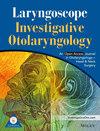Radiologic Evaluation of Paranasal Sinuses in Sickle Cell Anemia and Thalassemia: Case–Control Study
Abstract
Background
Sickle cell disease and thalassemia are inherited hematological disorders that are common worldwide. These patients suffer from chronic hemolytic anemia, which can result in bone marrow dysfunction and, in rare cases, extramedullary hematopoiesis. These pathophysiological changes can predispose patients to sinus complications or misdiagnosis in imaging studies.
Objective
Evaluate the maxillary sinus abnormalities in patients with β-thalassemia, sickle cell anemia, and sickle cell–beta thalassemia.
Methods
A multicenter, case–control study was conducted, including 212 participants, categorized into four groups: control (n = 100), sickle cell anemia (n = 51), β-thalassemia (n = 15), and sickle cell-beta thalassemia (n = 46). Demographic information, laboratory parameters (mean hemoglobin levels and hemoglobin electrophoresis), history of hydroxyurea use, and blood transfusion were recorded. Computed tomography was used to assess sinus wall thickness, extramedullary hematopoiesis, and related sinonasal abnormalities.
Results
Significant maxillary sinus wall thickening across all disease groups was found, with the β-thalassemia exhibiting the most pronounced changes (p < 0.001). A negative correlation was observed between hemoglobin levels and sinus wall thickness in sickle cell anemia. Extramedullary hematopoiesis in the paranasal sinuses, although rare, was identified in five patients with β-thalassemia. Obstruction of the ostiomeatal complex was observed in 14.3% of the β-thalassemia, 13.7% of sickle cell anemia, and 6.5% of sickle cell–beta thalassemia.
Conclusion
Our findings reveal significant maxillary sinus wall thickening in β-thalassemia, sickle cell anemia, and sickle cell–beta thalassemia. Recognizing these structural changes is important for radiologists and otolaryngologists, as they may resemble other pathologies and lead to diagnostic challenges if not carefully interpreted.
Level of Evidence
4.


 求助内容:
求助内容: 应助结果提醒方式:
应助结果提醒方式:


